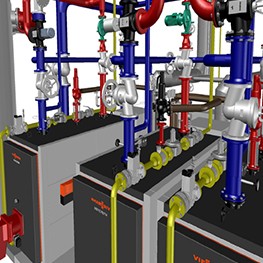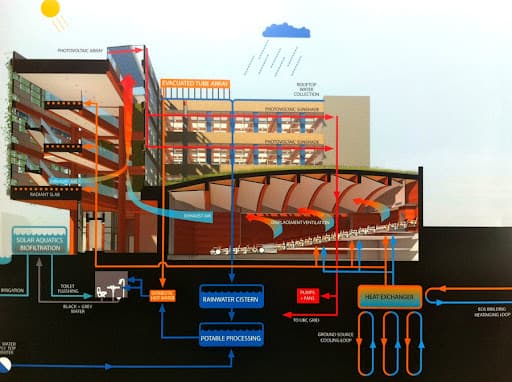The Main Elements of Your House's Plumbing System
The Main Elements of Your House's Plumbing System
Blog Article
We've discovered this article relating to Exploring Your Homes Plumbing Anatomy directly below on the net and reckoned it made good sense to share it with you in this article.

Understanding just how your home's plumbing system functions is necessary for every home owner. From delivering clean water for alcohol consumption, cooking, and showering to securely removing wastewater, a properly maintained pipes system is important for your family members's health and wellness and convenience. In this extensive overview, we'll check out the intricate network that comprises your home's pipes and offer pointers on maintenance, upgrades, and taking care of typical concerns.
Introduction
Your home's pipes system is more than simply a network of pipes; it's a complex system that guarantees you have accessibility to clean water and reliable wastewater removal. Recognizing its components and exactly how they interact can assist you protect against costly repair services and ensure whatever runs efficiently.
Basic Parts of a Pipes System
Pipes and Tubes
At the heart of your pipes system are the pipes and tubing that lug water throughout your home. These can be made of different products such as copper, PVC, or PEX, each with its benefits in terms of sturdiness and cost-effectiveness.
Fixtures: Sinks, Toilets, Showers, and so on.
Fixtures like sinks, bathrooms, showers, and bathtubs are where water is utilized in your house. Understanding exactly how these components attach to the plumbing system assists in detecting troubles and planning upgrades.
Valves and Shut-off Factors
Shutoffs control the flow of water in your plumbing system. Shut-off shutoffs are critical during emergencies or when you require to make fixings, allowing you to isolate parts of the system without interrupting water circulation to the whole residence.
Water Supply System
Key Water Line
The main water line connects your home to the community water system or an exclusive well. It's where water enters your home and is dispersed to various fixtures.
Water Meter and Pressure Regulator
The water meter steps your water usage, while a pressure regulator guarantees that water streams at a risk-free stress throughout your home's pipes system, stopping damages to pipelines and fixtures.
Cold Water vs. Hot Water Lines
Understanding the distinction between cold water lines, which supply water directly from the main, and hot water lines, which carry heated water from the water heater, helps in troubleshooting and planning for upgrades.
Drainage System
Drain Pipeline and Traps
Drain pipes carry wastewater away from sinks, showers, and toilets to the sewer or septic tank. Catches protect against drain gases from entering your home and likewise trap debris that could create obstructions.
Air flow Pipelines
Air flow pipes allow air into the drainage system, preventing suction that can reduce drain and trigger traps to vacant. Correct air flow is important for maintaining the integrity of your pipes system.
Relevance of Correct Drain
Guaranteeing proper drainage prevents back-ups and water damage. Consistently cleaning up drains and preserving catches can stop costly repairs and expand the life of your pipes system.
Water Heating Unit
Types of Water Heaters
Water heaters can be tankless or traditional tank-style. Tankless heating systems heat water as needed, while storage tanks save warmed water for instant use.
Upgrading Your Plumbing System
Factors for Upgrading
Upgrading to water-efficient components or changing old pipelines can enhance water high quality, lower water expenses, and enhance the worth of your home.
Modern Plumbing Technologies and Their Benefits
Check out technologies like clever leak detectors, water-saving bathrooms, and energy-efficient water heaters that can conserve money and lower ecological impact.
Expense Considerations and ROI
Compute the upfront prices versus long-lasting financial savings when thinking about pipes upgrades. Many upgrades spend for themselves through minimized utility expenses and fewer repair services.
How Water Heaters Link to the Plumbing System
Comprehending how water heaters attach to both the cold water supply and hot water circulation lines helps in detecting issues like inadequate warm water or leakages.
Maintenance Tips for Water Heaters
On a regular basis flushing your water heater to get rid of sediment, inspecting the temperature level settings, and examining for leaks can expand its lifespan and enhance power efficiency.
Typical Pipes Issues
Leaks and Their Reasons
Leaks can happen as a result of maturing pipes, loosened installations, or high water pressure. Attending to leakages without delay avoids water damage and mold development.
Obstructions and Blockages
Blockages in drains pipes and bathrooms are usually brought on by flushing non-flushable items or an accumulation of oil and hair. Making use of drainpipe screens and being mindful of what decreases your drains pipes can stop obstructions.
Indicators of Pipes Problems to Watch For
Low water pressure, slow drains, foul odors, or uncommonly high water expenses are signs of prospective plumbing issues that ought to be dealt with immediately.
Pipes Maintenance Tips
Routine Assessments and Checks
Set up annual plumbing assessments to catch concerns early. Search for indicators of leaks, corrosion, or mineral build-up in taps and showerheads.
Do It Yourself Upkeep Tasks
Straightforward jobs like cleaning faucet aerators, checking for toilet leaks using dye tablets, or insulating revealed pipelines in cool environments can protect against major plumbing concerns.
When to Call a Specialist Plumbing Technician
Know when a plumbing issue calls for expert know-how. Trying intricate repair work without appropriate knowledge can cause more damages and greater repair service prices.
Tips for Decreasing Water Use
Simple routines like fixing leakages promptly, taking much shorter showers, and running complete tons of laundry and meals can save water and reduced your utility bills.
Eco-Friendly Plumbing Options
Think about lasting pipes materials like bamboo for floor covering, which is durable and green, or recycled glass for kitchen counters.
Emergency situation Readiness
Actions to Take Throughout a Pipes Emergency situation
Know where your shut-off valves are located and just how to switch off the water system in case of a burst pipe or significant leakage.
Significance of Having Emergency Contacts Handy
Keep call info for neighborhood plumbing technicians or emergency situation services conveniently available for fast reaction throughout a plumbing situation.
Environmental Effect and Conservation
Water-Saving Fixtures and Devices
Setting up low-flow taps, showerheads, and commodes can significantly reduce water usage without compromising efficiency.
DIY Emergency Fixes (When Appropriate).
Short-term repairs like making use of air duct tape to patch a leaking pipe or putting a pail under a dripping faucet can decrease damage up until a specialist plumber arrives.
Final thought.
Recognizing the composition of your home's plumbing system equips you to maintain it efficiently, saving money and time on fixings. By adhering to regular upkeep regimens and staying educated regarding contemporary pipes modern technologies, you can ensure your pipes system runs effectively for several years ahead.
HOW YOUR PLUMBING SYSTEM WORKS
Which Pipes Do What?
Blue lines = fresh water supply entering the building Red lines = hot water supply entering the building Grey lines = pipes carrying waste away from the building and venting pipes carrying gases away from the building (through the roof) YOUR MAIN PLUMBING SYSTEMS
There are two main plumbing systems that support your home s basic plumbing needs one that brings clean water into your home, and one that sends dirty water away from your home. Connected to the toilet, bath, shower, and other faucets in your home, these two systems keep your water flowing in the right directions.
ACCESSING FRESH WATER
Fresh and clean water is brought into your home through the main water supply line . Filtered through one pipe, this water is pressured to flow into the various fixtures in your home at any given time.
This water can be sourced from a well located on your property, a pond or river (mostly cottages), or, as in most cases, from the city s municipal water treatment centre. However, it is important to note that water that is untreated, such as the water siphoned from ponds or rivers, may not be safe to drink. Personal water supplies always need to be treated for hardness and contaminants before consumed.
MUNICIPAL WATER SUPPLIES
Improve taste and odour Remove sediment Eliminate hardness Reduce chlorine COLD WATER SUPPLY VS. HOT WATER SUPPLY
Cold water flows into your home or building through the service line, which then distributes hot or cold water to your fixtures. This line is most commonly run through a central column that runs floor to floor. Hot water runs in short and straight pipes as the longer the pipeline, the more heat that will be lost in the transfer. Having shorter pipes also allows residents to access hot water more quickly.
WASTE WATER SYSTEM
Your wastewater system is divided into two parts pipes that send wastewater away from your home and venting pipes that send sewer gas away from your home. Sewage water travels through pipes that flush the water and waste towards local sewers that are operated and managed by your city or town. Most sewer systems rely on gravity to move the wastewater to where it needs to go.
The further away from your toilet or sink, the larger wastewater pipes become. This allows for waste to be disposed of from various parts of your home or business at once without pipe blockages. The angle and flow of these pipes are also essential for keeping your waste pipes clear of build up.
https://harrisplumbing.ca/how-your-home-plumbing-system-works/

I have been very serious about Understanding Your Home's Plumbing Anatomy and I'm hoping you enjoyed reading my blog post. In case you enjoyed our blog entry kindly don't forget to share it. Thanks a lot for going through it.
Call Today Report this page